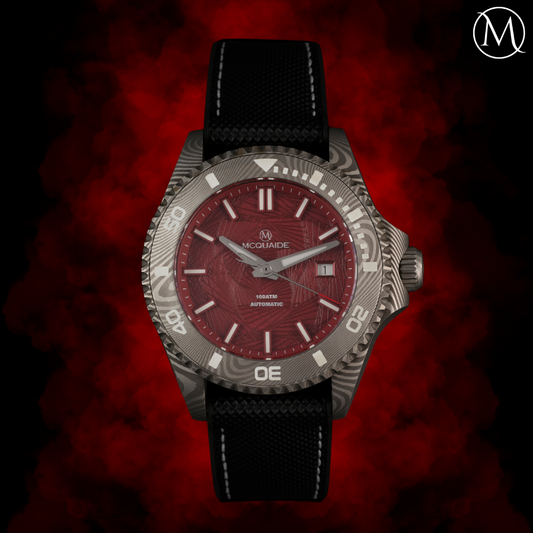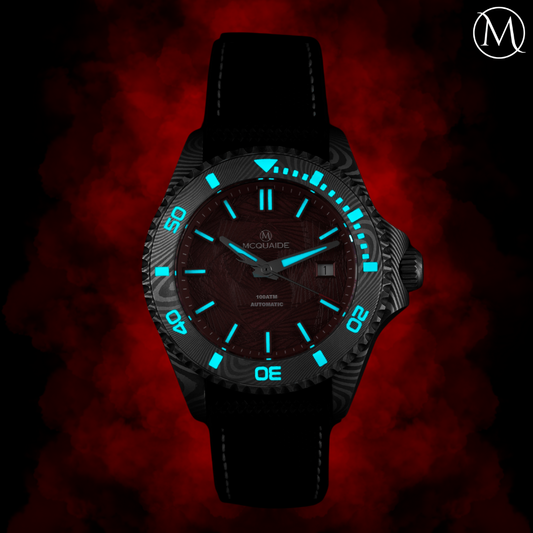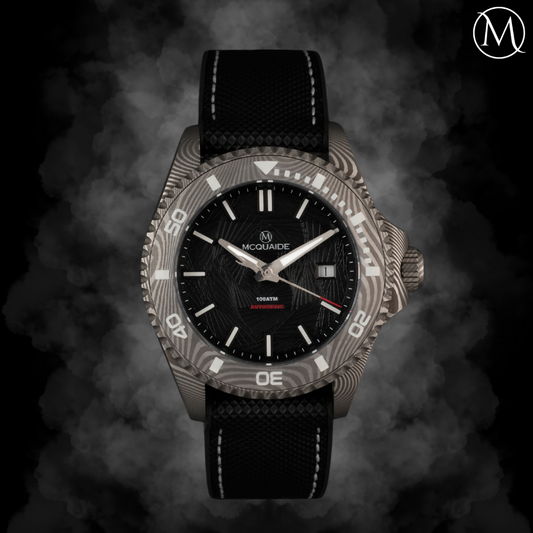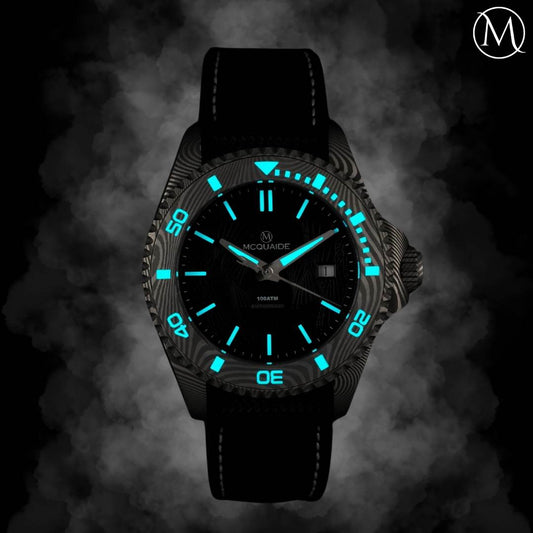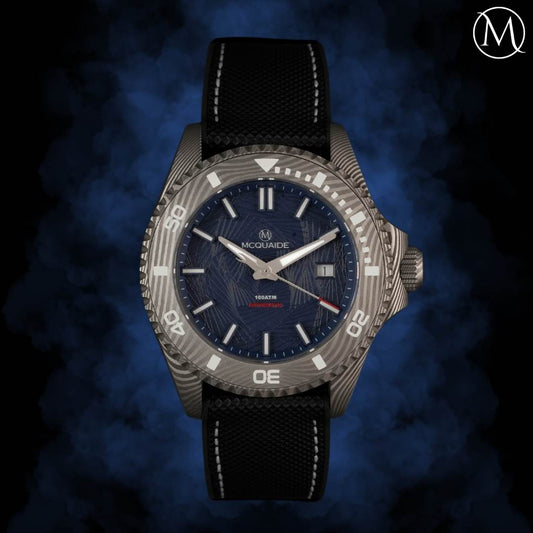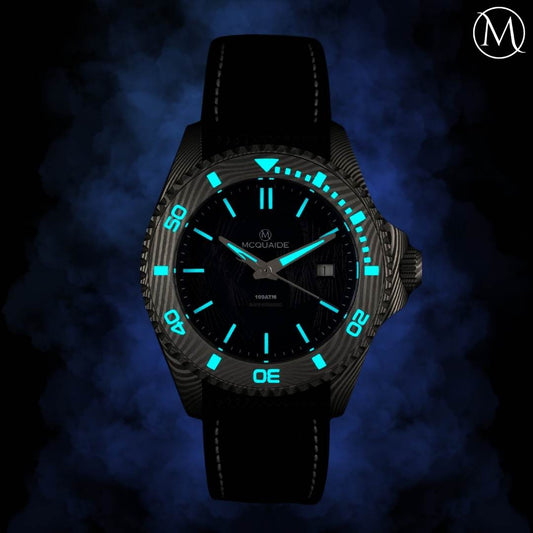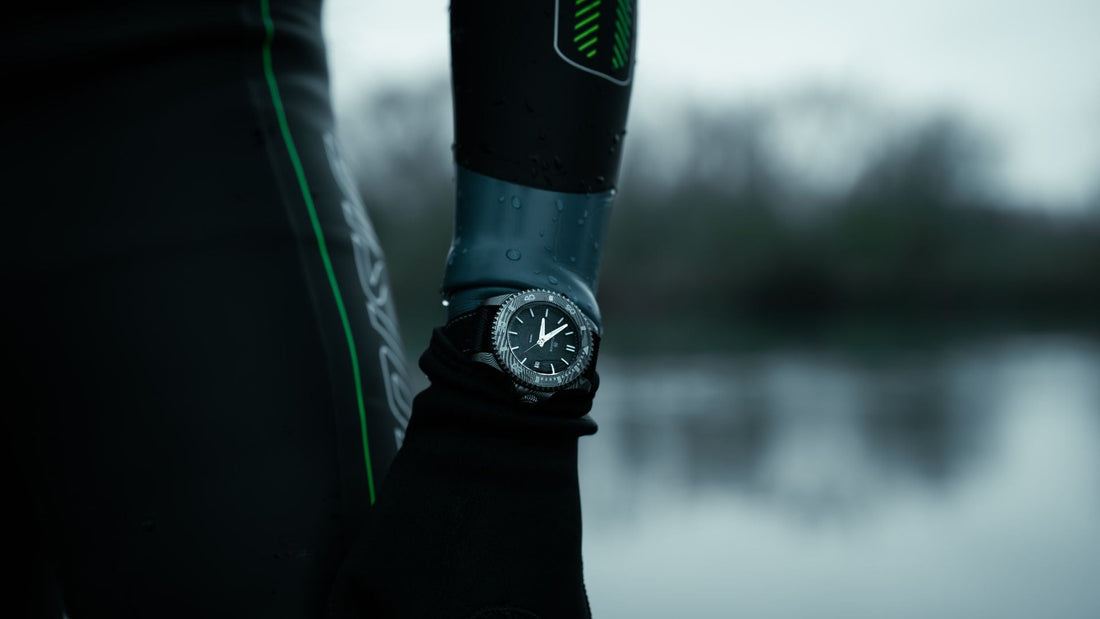
How diving watches work: A guide for scuba divers
Robert McquaideDiving watches have long been a staple for scuba divers, adventurers, and watch enthusiasts alike. These steel watches are built to withstand extreme underwater conditions while providing crucial functionality for divers. But how do they work? What makes them different from regular water-resistant watches? In this guide, we’ll explore the mechanics behind diving watches, including helium escape valves, screw-down crowns, and pressure testing (ATM ratings).

What is a dive watch?
A dive watch is a specially designed timepiece built to withstand underwater pressure while providing accurate timekeeping. Unlike regular water-resistant watches, dive steel watches must meet strict ISO 6425 standards. These watches are engineered to function reliably at depths ranging from 200 meters to 1000 meters or more.
How Does a Dive Watch Work?
Diving watches operate using mechanical or quartz movements, but their defining features set them apart. Here’s a closer look at the key components that make a dive watch function under extreme conditions:
1. Water Resistance & ATM Ratings
ATM (Atmospheres) rating is a measurement of how much pressure a watch can handle underwater. One atmosphere (1 ATM) is equivalent to 10 meters of water resistance. However, this does not mean you can take a watch rated for 30 meters (3 ATM) scuba diving—it is merely splash-resistant. Here’s a general guide:
- 3 ATM / 30m – Resistant to rain and splashes
- 5 ATM / 50m – Can handle light swimming
- 10 ATM / 100m – Suitable for snorkeling and surface swimming
- 20 ATM / 200m – Good for recreational scuba diving
- 100 ATM / 1000m – Professional 1000m dive watch suitable for deep-sea diving
2. Helium Escape Valve: Why it matters
For professional divers who work in deep-sea environments, a helium escape valve is an essential feature. When divers use air compressors to breathe in pressurized environments, helium molecules can enter the watch case. If not released, the trapped helium can cause the crystal to pop off due to pressure differences when surfacing. A helium escape valve automatically or manually releases built-up helium, preventing damage to the watch.

3. Screw-Down Crown: A crucial seal
One of the most important elements of a steel dive watch is the screw-down crown. Unlike standard watches, where the crown simply pulls out, a dive watch’s crown screws into the case, creating a watertight seal. This prevents water from entering the movement, ensuring the watch remains functional even in deep-sea conditions.

4. Unidirectional rotating bezel: Measuring dive time
A unidirectional rotating bezel is a signature feature of a dive steel watch. Before descending, a diver aligns the bezel’s marker with the minute hand. As the dive progresses, the bezel allows the diver to track elapsed time easily. The one-way rotation ensures that accidental movement can only shorten the dive time, adding a safety margin.

5. Luminescent hands & markers
Deep underwater, light diminishes quickly. To maintain readability, dive steel watches use luminescent materials on hands and markers, allowing divers to check the time even in low-visibility conditions. Our McQuaide Q1 used BGW9 Sumer-LumNova, a high-performance luminescent that emits a bright blue-green glow in low-light conditions, offering excellent longevity and visibility

What to look for in a dive watch
Here are the key features to look for in a dive watch:
- Water resistance: At least 200m (20 ATM) for serious diving
- Screw-down crown: Ensures a secure, watertight seal
- Helium escape valve: Necessary for professional deep divers
- Rotating bezel: Helps track dive time accurately
- Strong crystal: Sapphire or mineral glass for scratch resistance
- Luminescence: Ensures visibility in dark waters
Why are dive watches so popular?
Even among non-divers, dive watches, and mostly steel watches have remained incredibly popular. Their rugged build, classic aesthetic, and association with adventure make them a favourite among collectors and watch enthusiasts.

Conclusion
A well-designed scuba diving watch is more than just a fashion statement—it’s a vital tool for underwater explorers. With features like helium escape valves, screw-down crowns, and high ATM ratings, these watches ensure reliability and safety in extreme conditions. Whether you’re searching for a 1000m dive watch or a durable everyday piece, understanding how dive watches work will help you make an informed choice.
McQuaide is proud to introduce our debut watch, the Q1, designed with all the essential features of a true dive watch. With a 100ATM water resistance, screw-down crown, helium escape valve, 120-click unidirectional bezel, sapphire crystal, and BGW9 Super-LumiNova, the Q1 is built for adventure.

